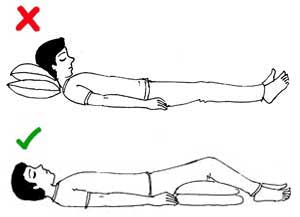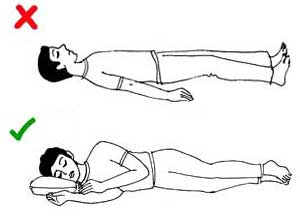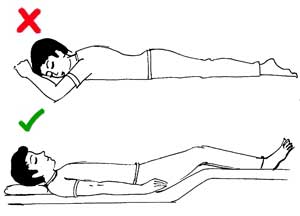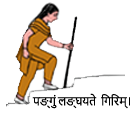Proper Posture
Proper posture allows appropriate movements of our body and avoids fatigue during routine activities. It automatically increases the speed of work and makes one more confident. On the other hand, improper posture does not allow proper positioning of joints. It leads to extra strain on ligaments and muscles, resulting in pain, sprain, and fatigue. Abdominal organs too do not function appropriately in forward bending postures.
Improper posture is the leading cause of most cases of neck, back, and low back pain. Our spine, which keeps us straight, comprises 33 small bones (each one called vertebra). Our spine has a backward curvature at the back (thoracic spine) and a forward curvature at the neck and low back. Proper posture implies maintaining these curvatures of the spine all the time.
Standing up

When you are standing up straight, your ears, shoulders, hips, and ankles should be in a straight line. Keep your head straight. Chin should be parallel to the ground. Both hips and shoulders should be at the same level. Keep your back and knees straight. Bring your chest and low back little forwards to make them straight. Ensure that both your legs carry equal weight.
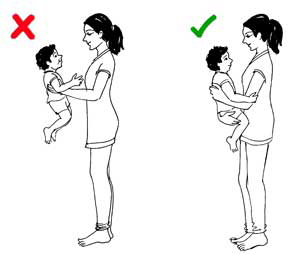
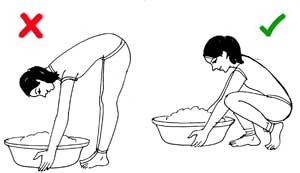
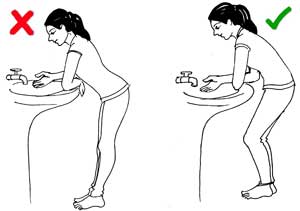

Sitting on chair
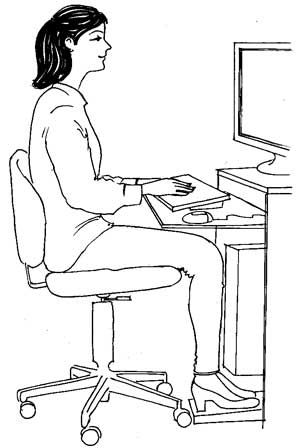
Keep your knees at 90 degrees while sitting on a chair. The height of the chair should be such that your legs rest on the floor. Hips, too, should be placed at 90 degrees. The waist should touch the back of the chair. Keep a small pillow behind your waist if it does not reach the back of the chair. Keep your back straight. Maintain your shoulders at the same level. Your neck must remain straight without bending forward. Back curvature after prolonged sitting can be avoided by placing one thigh over another or using a small footrest. While working on a table, keep the chair as near to the table as possible. While working on a computer, the screen and eyes should be at the same level. Go for an intermittent short walk if you have to sit for a prolonged period.



Sleeping
